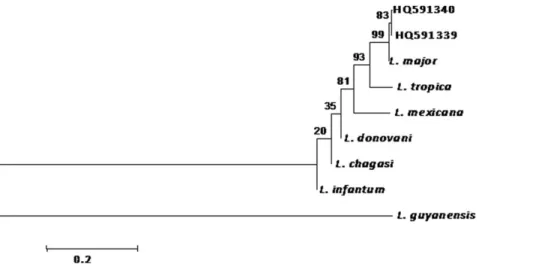First detection of Leishmania major DNA in Sergentomyia (Splaeomyia) darlingi from cutaneous Leishmaniasis Foci in Mali
Texte intégral
Figure


Documents relatifs
The current ioint effort of researchers and the Ministrv of Health authorities in Morocco must be reinforced 6 order to delineate the distribution of the
The main objective of this study was to detect Leishmania infection in the vector, Phlebotomus sergenti and in human skin samples, in the El Hanchane locality, an emerging focus
University of the French West Indies and Guiana, Cayenne, France (S. Simon); Travel Medicine Alliance, Brisbane, Queensland, Australia (D. Mills); Cayenne Hospital, Cayenne
Department of Tropical and Infectious Disease, University Hospital of Avicenne, Bobigny, France; Parasitology and Mycology Laboratory, University Hospital of
Here, cellular and humoral immune responses of healed CL (hCL) and Mediterranean visceral leishmaniasis (MVL) patients were evaluated against results for Leishmania major
First report on natural infection of Phlebotomus sergenti with Leishmania promastigotes in the cutaneous leishmaniasis focus in southeastern Tunisia. Tabbabi A, Ghrab J, Aoun K,
and the similarities of the immune responses between the healed and the asymptomatic populations in CL endemic areas, it is plausible that Leishmania species persist inside the skin
The full-length rLmlRAB as well as its divergent part rLmlRABC in- duced high significant levels of IL-10 in immune as well as in naïve groups, indicating that IL-10 production was